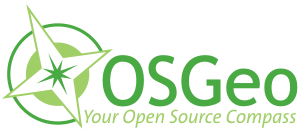Tutorials
Home > Tutorials
Tutorials at FOSS4G provide regular attendees the opportunity to explore one topic in detail, often in a hands on setting.
- Tutorials are 1½ hours long.
- Tutorials are open to all conference registrants.
- Tutorials Labs run concurrent with the presentation program from Tuesday to Thursday (September 7 to 9).
The scheduling for the tutorials is available in the final program page.
Tutorials
T-01: gvSIG Mobile and Mini tutorial
This tutorial is aimed to show the last developments on gvSIG mobile and gvSIG mini projects. It will be user oriented. The tutorial will be interesting for anyone looking for a mobile mapping applications, to grab data on field, view local and remote servers, etc.
T-02: PyWPS a tutorial for beginners and developers
PyWPS is Python implementaiton of OGC Web Processing Service (WPS) in it's current 1.0.0 version. It is possible to run it as CGI application, in mod_python environment or as Java servlet. PyWPS does not implement any analytical functionality by itself, this has to be done by specific process, which has to be configured or programmed by the user. PyWPS offers just the WPS communication.
T-03: Building web based GIS applications with GeoEXT
GeoExt is a pure JavaScript toolkit for building rich web GIS applications, merging the power of Ext JS and OpenLayers.
Starting from a simple web page with a draggable map window, attendees will get familiar with Ext JS concepts like data management, UI components and layouts.
T-04: Mastering advanced GeoNetwork
The tutorial Mastering advanced GeoNetwork is intended for intermediate or advanced users with previous knowledge of GeoNetwork opensource based catalog.
Focus will be on configuration of GeoNetwork for a production environment using an enterprise-ready database (like MySql or PostgreSql) and deploying the application on Tomcat.
T-05: Hands-on introduction to Mapguide Open Source
This class is for those who want to fast-track into installing and using MapGuide Open Source.
T-06: First steps with MapFish
MapFish is an open-source development framework for building web-mapping applications. It is based on the GeoExt library (which is a combination of ExtJS and OpenLayers), and extends the Pylons general-purpose web development framework with geo-specific functionalities. This tutorial aims to present the framework, by giving a tour of the different functionalities offered, and a first developer / user experience.
T-07: A hands-on introduction to spatial etl with Geokettle
ETL (Extract, Transform and Load) tools are conceived to facilitate the integration of heterogeneous data sources, often in order to feed data warehouses. This tutorial is a practical introduction to the open source spatial ETL tool GeoKettle .
T-08: How to generate billions of tiles using distributed cloud-computing
This tutorial aims to describe the tile generation process, with software like TileCache or GeoWebCache and to describe the usage of Cloud Computing infrastructure to parallelize and speed up the tile generation process. Usage of Cloud Computing for the storage of large number of tiles will also be presented.
T-10: SDI best practices with Geonode
Attendees to this introduction to the GeoNode will learn how to bring the best practices of the web to their Spatial Data Infrastructure. After an overview of the bottom-up philosophy guiding the GeoNode project, we will explore how its features embody these ideas.
T-11: Standardized geoprocessing with 52°north open source software
After a brief introduction to the basic concepts of standardized geoprocessing, the participants will set up a scenario installation of the different 52°North geoprocessing components. With the help of these free components, a common geoprocessing problem will be solved.
T-12: Sensor Web Enablement - integrating sensor data into spatial data infrastructures
Within this tutorial the participants will learn how the Sensor Web Enablement (SWE) Architecture of the Open Geospatial Consortium (OGC) can be applied in practice. The SWE framework consists of a set of standards for sensor data and metadata formats as well as web service interfaces offering sensor related functionality (e.g. accessing sensor data, alerting, sensor tasking).
This hands-on tutorial covers the setup of the upcoming deegree 3 featureService and its configuration for complex application schemas. As working examples, (all!) INSPIRE Annex I Data Themes and GeoSciML 2.1 will be served from both GML files and a PostGIS database. We will explore requesting the features using the WFS protocol as well as performing transactions using WFS-T. Finally, real-time styling and rendering of the features will be demonstrated using the deegree mapService.

